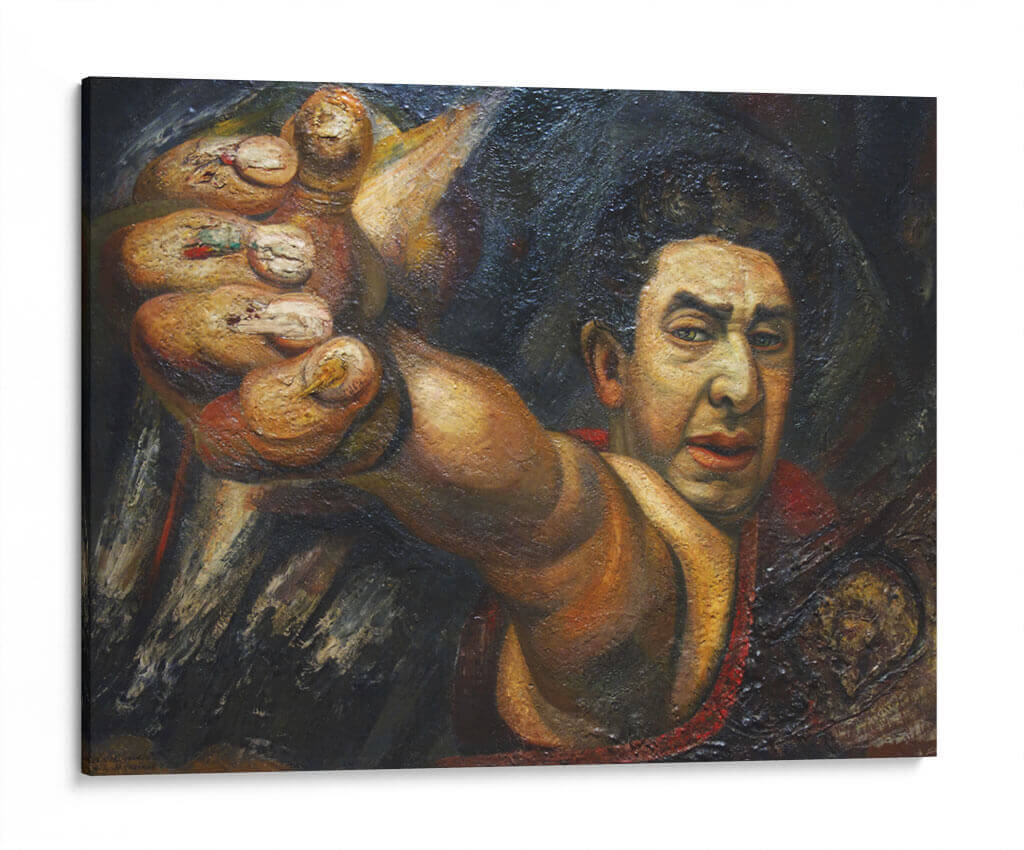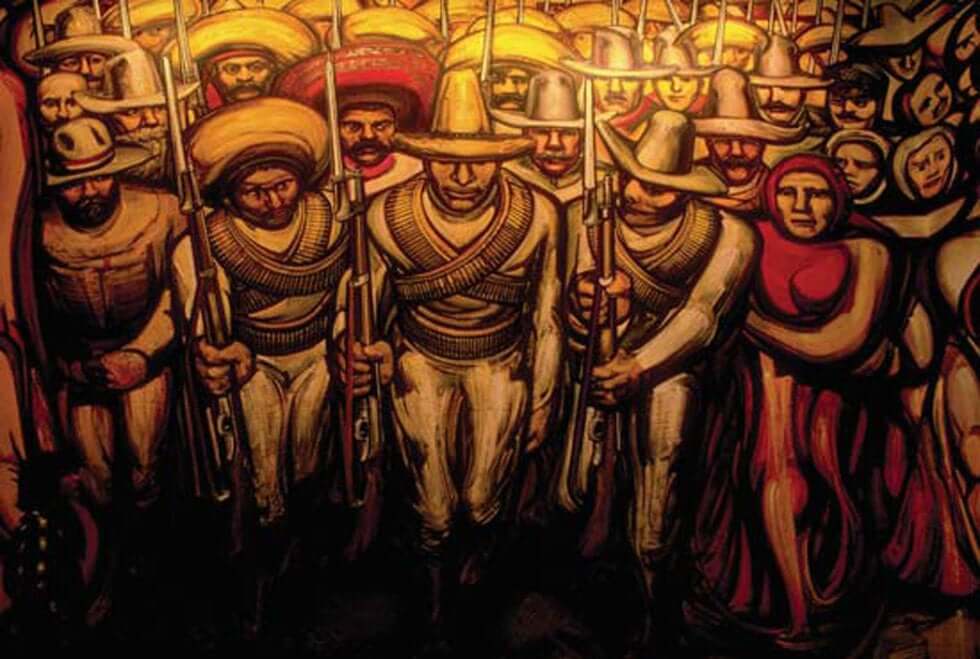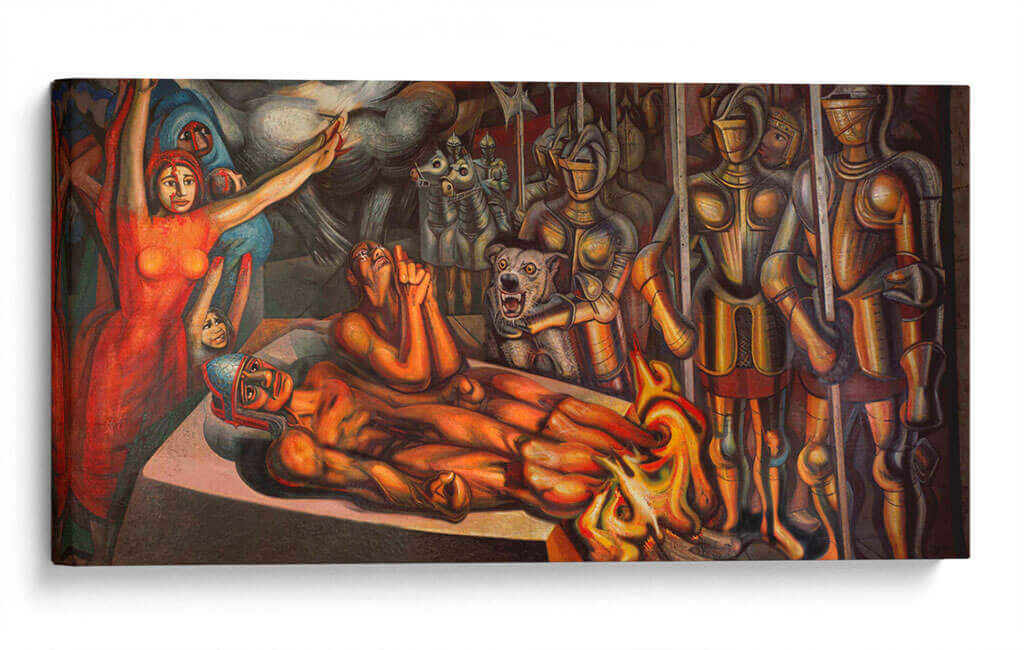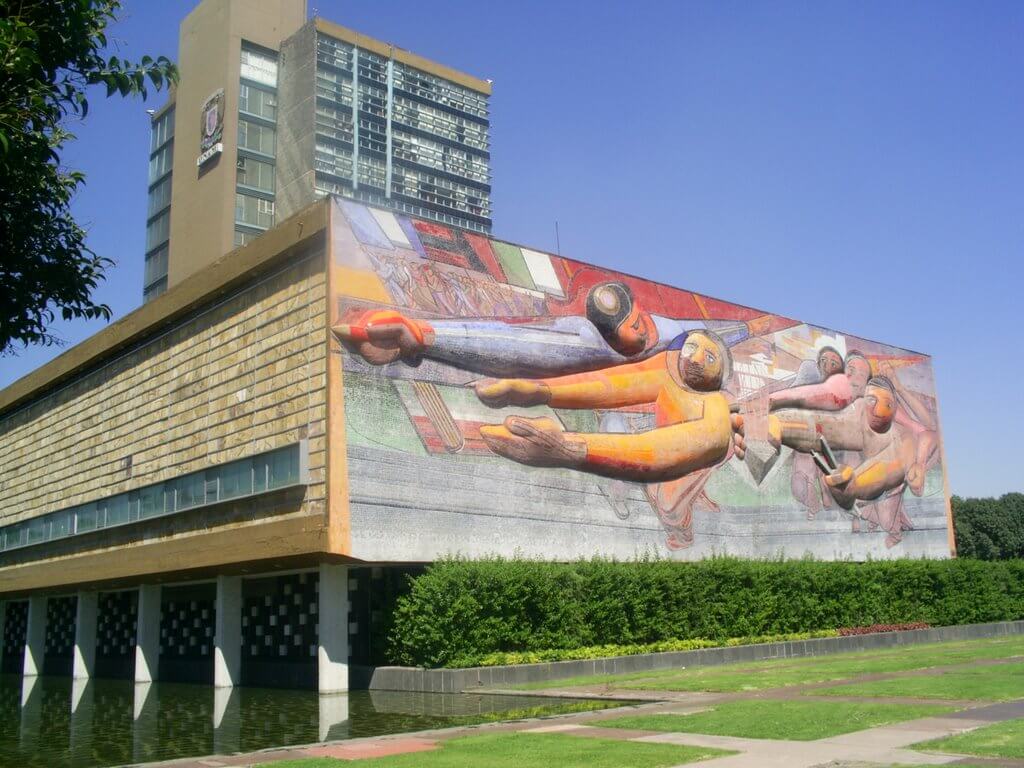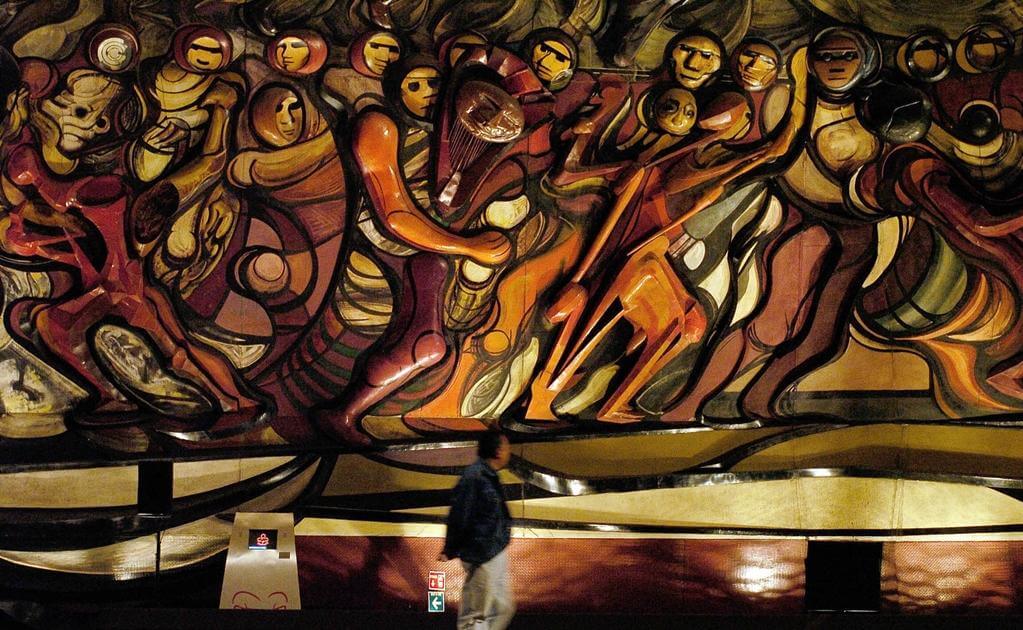Mexican painter, one of the trio of muralists (with Orozco and Rivera) who dominated 20th-century Mexican art. He was born in Chihuahua, the son of a lawyer, and was a political activist from his youth.
It was not until 1939 that he eventually completed a mural in Mexico—Portrait of the Bourgeoisie for the headquarters of the Union of Electricians in Mexico City (his slow start had prompted Rivera to retort in answer to criticism from him: ‘Siqueiros talks: Rivera paints!’). Thereafter, however, Siqueiros’s output was prodigious. He painted many easel pictures as well as murals, and though he insisted they were subordinate to his wall paintings, they were important in helping to establish his international reputation. His murals are generally more spectacular even than those of Orozco and Rivera—bold in composition, striking in colour, freely mixing realism with fantasy, and expressing a raw emotional power. In contrast with the sense of disillusionment and foreboding sometimes seen in Orozco’s work, Siqueiros always expressed the dynamic urge to struggle; his work can be vulgar and bombastic, but its sheer energy is astonishing. He often experimented technically, working with industrial materials and equipment, including spray-guns, cement-guns, and blow-torches (his use of unconventional methods influenced Jackson Pollock, who attended the experimental workshop Siqueiros ran in New York in 1936). In his late years he was showered with honours from his own country and elsewhere: he received the Lenin Peace Prize in 1967, for example, and in the following year became the first president of the newly founded Mexican Academy of Arts. His final major work, the Polyforum Siqueiros (completed 1971) in Mexico City, is a huge auditorium integrating architecture, sculpture, and painting.



